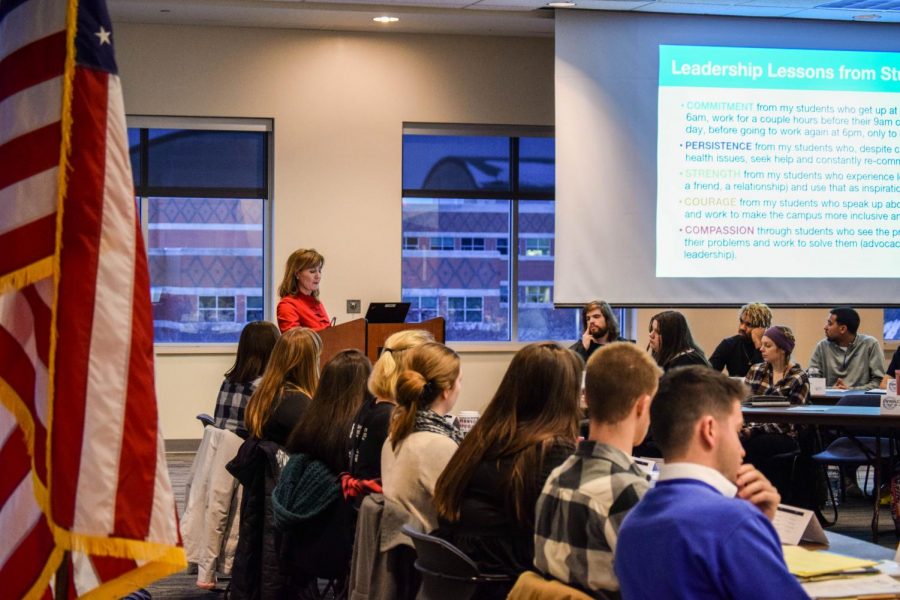Pledge of Allegiance returns to Student Senate agenda following public outcry, reflection
Nov 25, 2019
Following an emergency cabinet meeting, Grand Valley State University’s Student Senate announced that they would be reinstating the Pledge of Allegiance. According to a memorandum sent to student senators, university personnel and the Lanthorn, the cabinet voted 4-2 with two abstentions to return the pledge to the body’s agenda.
The two abstentions put the eight members present into a tie, with President Eric-John Szczepaniak breaking the split and ultimately reinstating the Pledge of Allegiance.
Vice President of Public Relations Ryan Fritz said that the meeting was held to address the criticism against the body’s decision to remove the Pledge of Allegiance during their Nov. 14 general assembly. That decision prompted students, community members and alumni to reignite the debate as to whether or not the pledge should be a part of the agenda.
“The waves of feedback came from both sides,” Fritz said. “The feedback we received from the various comments on all our social media platforms opened our eyes to viewpoints we neglected to address during the deliberation aspect of the vote that took place at the meeting where the pledge was taken off the agenda.”
According to the body’s bylaws, the president has the ability to change the agenda at their discretion. Initially, the vote to reinstate the pledge in October was done as a democratic courtesy to the body, but as matters escalated, executive action was taken.
“Our typical general practice is a democratic vote when voting matters are brought to the body,” Fritz said. “However, this was not a typical situation. We usually receive little to no feedback from the student body based on our internal operations, but this situation proved a point of serious contention for many students and potential students here at Grand Valley. Eric-John’s use of an overruling is not common practice; however, he used this ability with the best interest of the students in mind.”
Fritz said that Student Senate did seek advice from university administrators, as he said the situation put the body into “foreign territory.” This included work with University Communication on handling increased media presence.
“The administrators did not impact our decision,” Fritz said. “The most we got was additional feedback based on what folks were saying to the various departments they were calling into.”
During the body’s Nov. 21 general assembly, the first since the pledge was returned, Szczepaniak addressed the body to clear the air regarding the decision.
“Our administration, including our new president Philomena Mantella, welcomes these discussions and these dialogues,” Szecepaniak said. “They recognize that we have the ability and privilege to talk among ourselves and decide on issues of importance… It’s up to all of us to try to step our of our comfort zones to figure out how to make this a better place.”
With the general assembly came more public comment, including community members from both sides of the issue. While some speakers said that the return of the Pledge of Allegiance highlighted hypocrisy in the university’s mission toward improving diversity, others said that settling this dispute allows for Student Senate to move on and keep working for students.
Following two rounds total of public comment, Student Senate went about business as usual, which was a goal of Szczepaniak. At the end of his address to the body, Szczepaniak said that the benefit of ultimately putting the issue to rest would be that Student Senate would now be able to focus on projects that had been overshadowed by this discussion.
“It’s time to move on and get back to all of the work that all of the students at Grand Valley deserve, and the work that we know we can accomplish if we do this together,” Szczepaniak said.
























